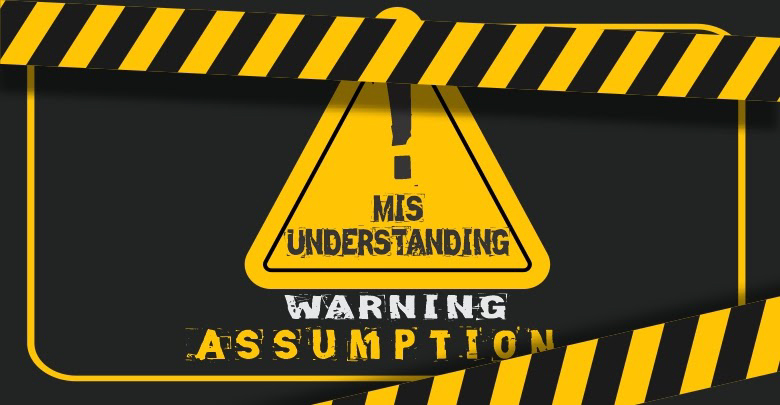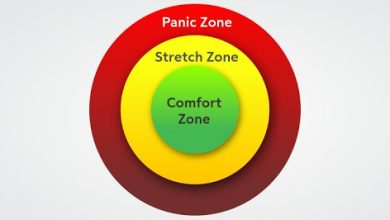Understanding vs. Assuming
Although it is natural to have our own ideas, assumptions and even stereotypes about different cultures and how people from that culture or group think and feel, it is imperative that we are able to check those assumptions and rectify those stereotypes if we want genuine communication and understanding to take place.

Why did I choose this tool? This tool gives us the chance to delve deeper into the concept of culture; to see some common but inadequate conceptions about culture; to increase our ability to understand other people and to “get to the heart of the matter” rather than judging by what we seem to see on the surface; and generally, to increase our awareness of what we are and are not talking about when we talk about the intercultural competence. It then follows with questions that we can use to test our view of reality and to rectify any misconceptions we may have about a culture, an ideology, or a person.
How does this apply to being a trainer? Being a trainer particularly in a multicultural environment requires us to be constantly challenging our views and perceptions to see if they are true and if they are useful to us and to the people we are training. If we have misconceptions and/or stereotypes about certain types of people, ideologies or cultures this can be easily felt by participants and can block them from being open to learning and growth in that setting. Whereas if we show that we are open to being challenged and really want to understand them, we not only build their trust in us and in the training process but also give them a chance to challenge themselves and their own perceptions as well, since openness breeds openness.
Main content:
The dictionary defines culture as:
1. the arts and other manifestations of human intellectual achievement regarded collectively.
2. the ideas, customs, and social behavior of a particular people or society.
Although these definitions may seem clear, in reality, if we were to delve into each of these definitions, as well as their variations within a particular culture, we would probably find a lot more variance and fluidity then these definitions initially imply.
Our brain is prone to simplify things and to turn away from complexity and uncertainty. It does this to help us make decisions, to conserve brainpower, and to simplify our everyday lives. And this is generally a good thing.
However, when it comes to people, and people are essentially the main ingredients of a culture, such simplifications can be counter-productive. They can lead to misunderstandings or even conflicts arising simply from not taking enough time and energy to really understand people instead of just assigning to them certain assumed cultural traits.
We can see this problem clearly when there is a popular movie that portrays a culture in a certain way, from the way Indian people reacted to the more mild but stereotypical portrayals in “Slumdog Millionaire”, to the way Iranian people reacted to the much more extreme portrayals of Iranians and Islam in the movie “Not Without My Daughter”.
The reason why misrepresentations or over-simplifications of cultural identities disturb people so much is because the message they send is: “This is how we see you, you are all the same, and there’s nothing you can do to change that perception.”
The only way that we can really help to resolve this problem is to show the opposite: that we are open to the nuances of culture, that we see people as individuals and not only with their group identity badge, and that we want to make our own choices and decisions about people and not have already made a decision about them based on misleading or exaggerated information.
According to Warwick Global Pad, there are 6 common inadequate conceptions about culture. In summary, they are:
- Culture is homogenous. This assumes that the culture is free of internal paradoxes and ambiguity.
- Culture is a thing. It is fixed, and it can act independently of human actors.
- Culture is uniformly distributed among members of a group. All members of the group act the same, and one who acts differently is a deviation from the norm and not the norm itself.
- An individual possesses but a single culture. He/she is only German, Brazilian, Chinese or Algerian. This also leads to the idea of having a political identity and the assumption that your culture is your identity and that it is based on one culture alone.
- Culture is custom. This one implies that the culture is dictating all your traditions and behavior and that learning about another culture merely means learning a new and fixed standard of etiquette.
- Culture is timeless. It does not change and evolve and remains a solid entity that is passed on from generation to generation.
When involved in an intercultural discussion, it’s easy to get caught up in the surface, in the terminology, and in our own perception of reality. The problem with this is that it can keep the discussion on a mind level and prevent it from reaching a heart level. In addition to this, different cultures (or different people) can have completely different meanings for the same word or concept and it can lead to unnecessary misunderstandings and conflicts.
If you are feeling this way and the discussion is not headed in a productive direction, try these questions to go deeper and get to the heart of the matter. We can’t always understand each other on a mind level, but emotions are common to every human on the planet. This is why when we can reach that level, we can always understand the other person, regardless of whether or not we agree with them.
Asking the right questions can help us to understand what someone really means, and why it matters to them in the first place. Chances are there is an emotional reason for their standpoint, regardless of whether it seems to be right or wrong to us. And we can understand their reason even if we don’t agree with their conclusion.
It’s important when asking these questions that our tone of voice and body language show that we are really interested in what they have to say and want to understand them. With the “wrong” tone or body language, these questions can be interpreted as confrontational, whereas with the right one they can be enlightening for both sides.
- Can you clarify what you mean by that?
- What does it make you feel?
- When did you develop this idea or opinion? What was the context?
- Can you give me an example of how this can play out in real life?
- Why do you think this is important?
- What do you think I mean when I say………..?
- What is the historical background behind this idea?
- I think that this (term, event, concept) means………, but I’m curious as to what else it could mean. What do you think?
- How else can you describe it?
- When I say…………what does it make you feel?
- Do you think if you were raised in a different culture that you would have the same opinion? Why or why not?
- Is this coming from your upbringing and culture or is it something you decided later on in life?
- If you could keep only 1 of your values, which one would you keep and why?
- What does it mean to you to stay true to your values?
- (when in a group) What do the rest of you think about this?
- What can be some of the positive implications of this concept? What can be some of the negative implications of it?
- Is it possible to express our opinions and ideas without feeling like we have to change those of another, or that they are trying to change us?
- What else can this mean?
- What are some good examples of the implementation of this? And what are some bad examples?
- What is your intention when you practice this?
- What are the similarities in our views? What are the differences?
- What is something that defines you and that you would never want to let go of?
- What parts of what you currently believe are you open to questioning?
- How can we incorporate all of these views into the bigger picture?
Exercises:
How to apply it in everyday life:
One simple question that we can ask ourselves in our everyday life to test our perception of reality is “what else can this mean”? Instead of jumping to a judgment or interpretation of a situation, event or person, by asking ourselves what else it can mean we can become open to different possibilities to seeing the situation, event or person from different perspectives and only after that deciding what meaning is most truthful/helpful at that moment.
Define your culture
Make a list of everything that you believe defines your culture. If you didn’t grow up with a traditional representation of your culture, then write down the things that you believe make up your personal culture or your family’s culture. Once the list is complete, go over it to see what aspects you are happy with and embrace, and see if there are any aspects that you don’t. Being aware of the elements that “automatically” are a part of your culture, and consequently a part of you, gives you the power the ability to change anything if you want to.





